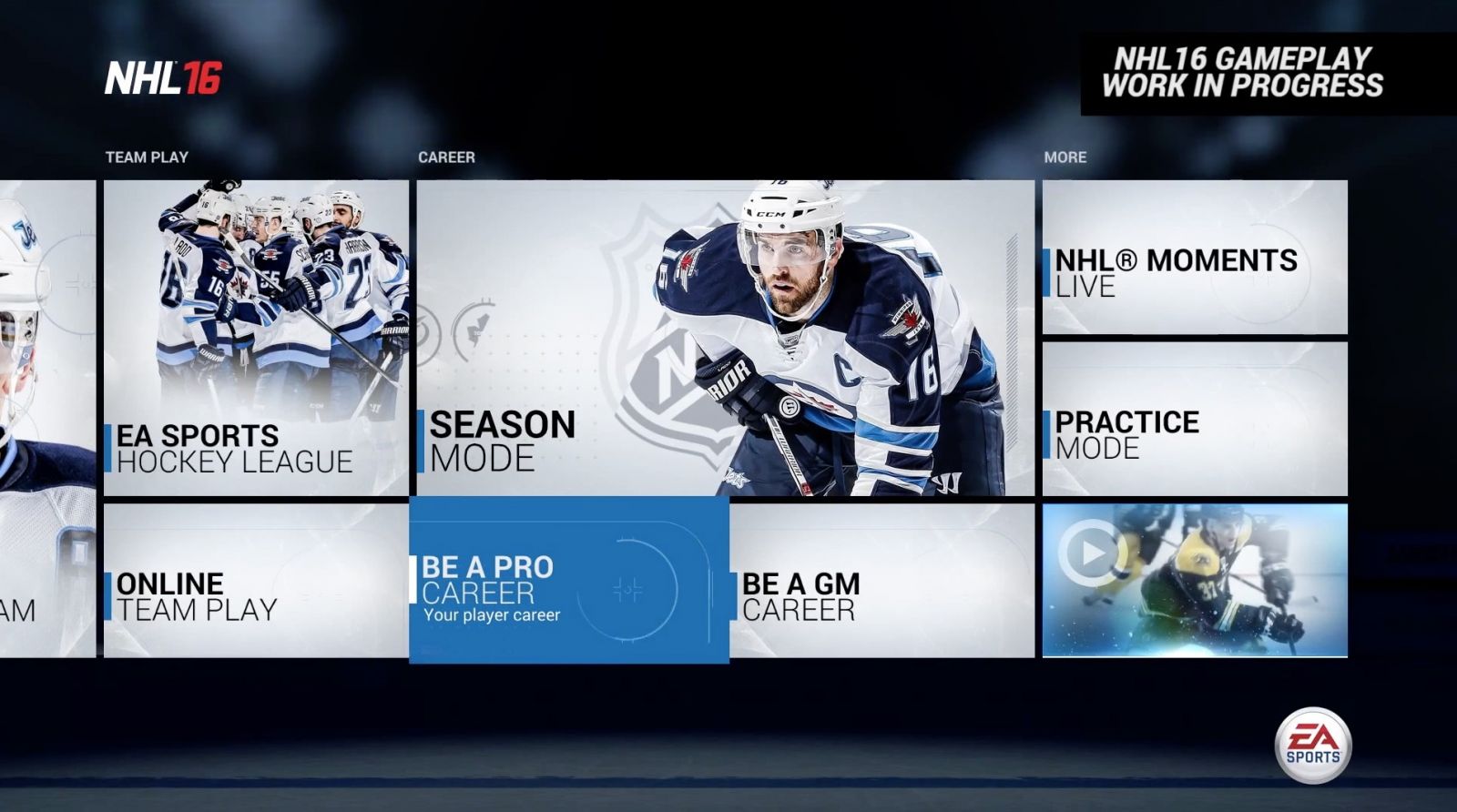NHL 16 delivers a return to several features that gamers missed on NHL 16 last year and a focus on team-play that can deliver online and on the couch multiplayer moments. We also get to play in the new EA Sports Hockey League (EASHL) with an updated version of the online team mode for the Xbox One and PS4. Board play, face-offs, and passing feel largely the same as NHL 16. Fight frequency and checking seemed toned down compared to last year. The collision animations also appear to be cleaned up.
To avoid injurious situations during gameplay, do everything you can to stay away from the boards, and make a habit of carrying the puck through traffic in a controlled glide by letting go of the left joystick -- this will give you more agility and make it easier to skate by any defenders who come charging at you for a body check. Other smart changes include setting your forwards to "carry puck" to keep them from going offside, and telling your top lines to "conserve energy" until your team reaches the point that it can roll out four lines of equal quality. Different from what coaches do in real life, it is very useful to put left-handed players on the right side and right-handed players on the left side of the hockey rink in NHL 16. Because their positions are contrary to what they would be in a real match, the players can trigger the powerful one-timer animation easily. Being a position which is no their natural position, a player will suffer from a penalty. Therefore you will need to buy “position-change” card.
Tripping penalties are frequent because of the use of the poke check button, but that's always been the case. But because defensive maneuvers seem weakened this year, I find I need to rely on it too often, thus more tripping calls result. Boarding calls seem more sensitive as well this year, as they've also been amped up in the league, but the severity of them needs to be settled. During just my third game, I incurred a 7-minute penalty (a major with a double minor tacked on), I'm not even sure that's supposed to happen at all.

There are a few options in every mode that affect my style of play which is disappointing, and I’ll be honest here, it affects my overall score for the game. For example, I liked to customize my camera angles and music; I play a ton of online HUT 16, and the mobile app was was an excellent feature. Of course there is a handful of stuff we can do without, like the 94 anniversary mode, as the anniversary was last year, or pre-season games, who likes ‘em? At the end of the day fans will be disappointed by a less usual list of modes/features.
Progression and regression are being tuned to better mimic how NHL 16 players develop and fall off. EA is using statistical analysis to chart how fast players are going from juniors or Europe when they are 18 to the NHL. From here they revise their curves to get the right amount of players to be first-year wonders and the right amount of guys to join when they turn 22 after playing a couple years in the minors. Their goal is to have some guys hit, and some might be 23 years old before they develop. Some may have long careers like Nicklas Lidstrom, and some might deteriorate.
The biggest story surrounding NHL 16 on next-gen is, of course, the missing features. And there are a lot of them. Check out this post at Operation Sports for a full list of all of the missing stuff. No Be A Legend. No Winter Classic. No Create-A-Team. No EA Sports Hockey League. No standard season mode outside of Be A GM. No minor league teams. No simming to next shift in Be A Pro. And the list goes on and on and on. Some features will be added back in via free updates, detailed here - NHL 16 Content Patch Plan - but even then this is a far cry from what fans are used to with the franchise. Please note - The Xbox 360 version still has all of these features and modes.
All of this speaks to the nature of annualized sports franchises, and makes sense when you factor in the game’s paltry 12 month development cycle, but it doesn’t really do anything to change the fact that, at its best, this is a half-finished game. Admittedly, the presentation upgrades - the new player models, arenas, crowds, audio enhancements, etc - are all very impressive, but it’s really not all that great of a selling point for a game that will be obsolete when the next one rolls around in a year, especially when this “unprecedented realism” comes at the price of the actual game part of your video game.
